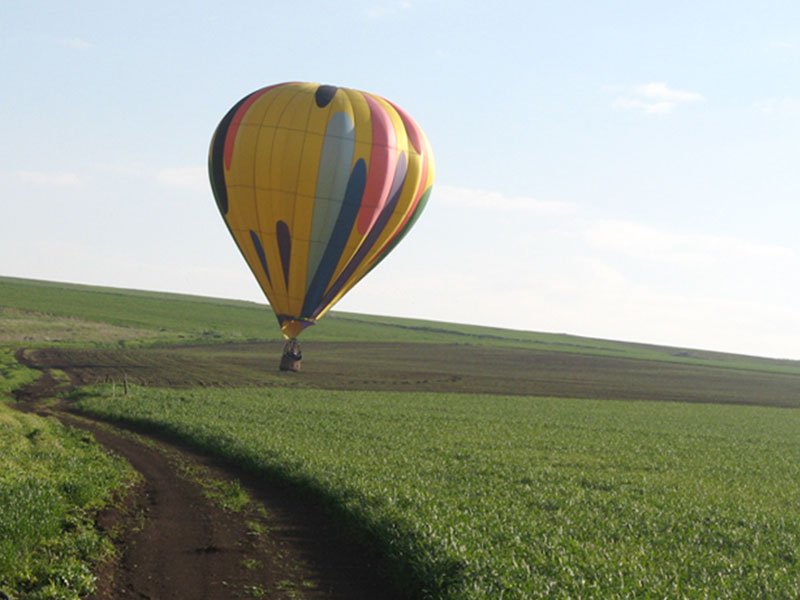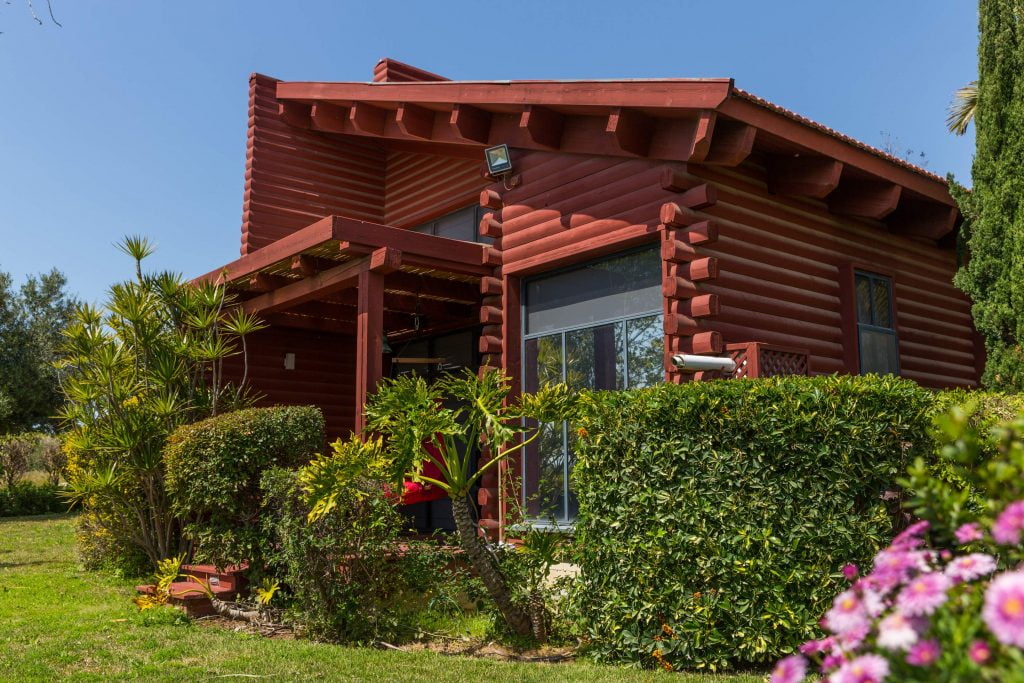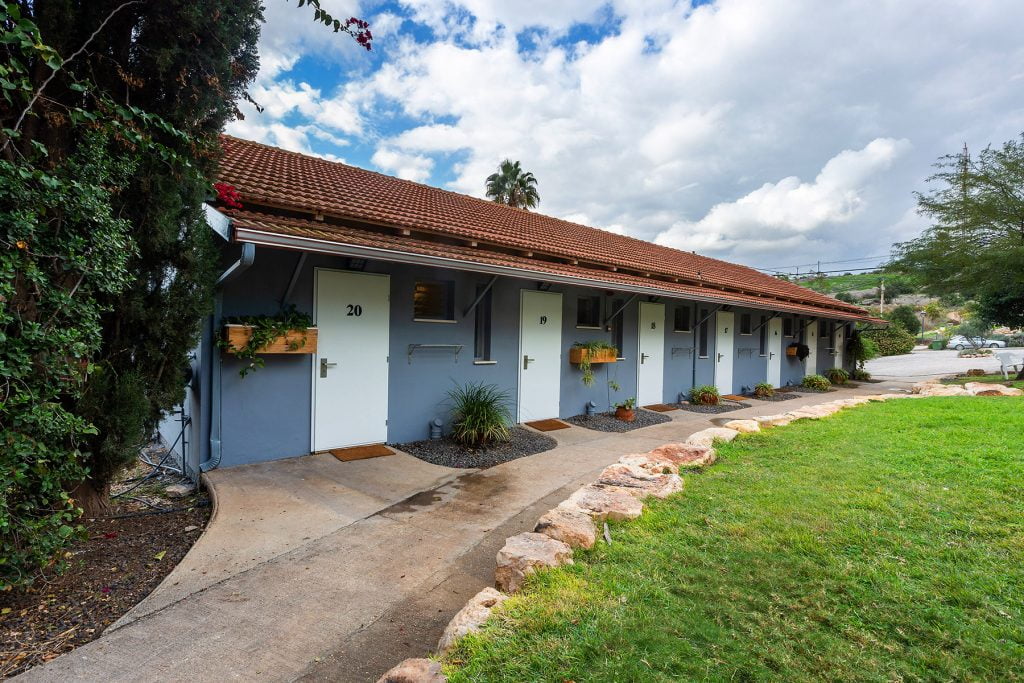Nazareth
“And in the sixth month the angel Gabriel was sent from God unto a city of Galilee, named Nazareth. To a virgin espoused to a man whose name was Joseph, of the house of David; and the virgin’s name was Mary.”(Luke 1:26-27)
According to Luke, Nazareth was the home of Joseph and Mary and the site of the Annunciation, when Mary was told by the Angel Gabriel that she would have Jesus as her son. Nazareth is also where Jesus grew up from some point in his childhood after returning to Israel from Egypt. In the 6th century, legends about Mary began to spark interest in the site among pilgrims, who founded the Church of the Annunciation at the site of a freshwater spring, today known as Mary’s Well. In 570, the Anonymous of Piacenza reports travelling from Sepphoris to Nazareth and refers to the beauty of the Hebrew women there, who say that St. Mary was a relative of theirs, and records: “The house of St. Mary is a basilica”. Nazareth is home to many centuries old churches, most of which are located in the city’s Old Market.The Church of the Annunciation is the largest Christian church building in the Middle East. In Roman Catholic tradition, it marks the site where the Archangel Gabriel announced the future birth of Jesus to the Virgin Mary (Luke 1:26-31). The Eastern Orthodox Church constructed St. Gabriel’s Church at an alternative site for the Annunciation. The Melkite Greek Catholic Churchowns the Synagogue Church, which is located at the traditional site of the synagogue where Jesus preached (Luke 4) The Church of St. Joseph’s Carpentry occupies the traditional location for the workshop of Saint Joseph The Mensa Christi Church, run by the Franciscan religious order, commemorates the traditional location where Jesus dined with the Apostles after his Resurrection The Basilica of Jesus the Adolescent, run by the Salesian religious order, occupies a hill overlooking the city.
Distance from Ein Harod: 24 km , 20 min.
Haifa
Haifa has a long history dating back to Biblical times. Built on the slopes of the historic Mount Carmel, the city was known in the 3rd century CE as a dye making center. Over time, it has fallen under the rule of the Byzantines, Crusaders, Ottomans, Egyptians and British, and today is home to a mixed population of Jews and Arabs, as well as to the Bahá’í World Center. The city also has a restored German Colony built by Templars who arrived there in 1868. The city was an industrial center based around the port and oil refinery, the towers of which long symbolized the city. Haifa, home to Jews, Muslim and Christian Arabs, Ahmadis, Druze, and Bahá’ís, is often portrayed as a mosaic of peaceful coexistence. The city and surrounding areas have biblical importance. Mount Carmel and the Kishon River are both mentioned in the Bible. Mount Carmel is riddled with caves, one of which near Haifa is traditionally known as the “Cave of Elijah ”, and considered by many Jews to have been the home of the Jewish biblical Prophet Elijah and his apprentice, Elisha. The highest peak of the Mount Carmel range is named El-Muharikah, an Arabic term meaning the burning, named on account of the belief that this was the exact spot of Elijah’s biblical confrontation with hundreds of priests of a Baal; the Baal in question was probably Melqart. The Carmelites were founded at, and named after, Mount Carmel, in the 12th century. Since that time, at the peak of the mount near Haifa, there has historically been a building that has been a mosque, monastery, and hospital; in the 19th century it was reconstructed as a Carmelite monastery, and a cave located there, which functions as the monastery’s crypt, was believed to have once been Elijah’s cave. It is now a popular tourist and pilgrimage destination. Haifa is also cherished by members of the Bahá’í Faith as it is an important site of worship, pilgrimage and administration for members of the religion. The Bahá’í World Centre (comprising the Shrine of the Báb, terraced gardens and administrative buildings) are all on Mount Carmel’s northern slope. The location of the Bahá’í holy places in Haifa has its roots to the imprisonment of the religion’s founder, Bahá’u’lláh, near Haifa by the Ottoman Empire during the Ottoman Empire’s rule over Palestine. The Bahá’í holy places are also the most visited tourist attraction of the city. The ruins of Shikmona, at the foot of Mount Carmel, is also considered historically important to Jews. Shikmona is also mentioned in the Talmud as the coastal town in which the blue dye for the Jewish prayer shawl Tallit (the Techelet thread) was extracted from sea-snails. Despite its image as a port and industrial city, Haifa is the cultural hub of northern Israel. During the 1950s, mayor Abba Hushi made a special effort to encourage authors and poets to move to the city, and founded the Haifa Theatre, a repertory theater, the first municipal theater founded in the country. The New Haifa Symphony Orchestra was established in 1950 and is the focus for classical music of the north of the country. Furthermore, the Haifa Cinematheque, founded in 1975, hosts the annual Haifa International Film Festival during the intermediate days of the Sukkot holiday.
Distance from Ein Harod: 60 km , 55 min.
Mount of Beatitudes
Towering 120 meters above the Sea of Galilee and offering the country’s most magnificent view of that shimmering blue lake, the Mount of Beatitudes is a favorite site for today’s tourists. In this area overlooking the sea, Jesus preached the Sermon on the Mount. Some late traditions of Christianity place this mountain in the area in which Jesus picked his 12 apostles. The mountain is topped by a Catholic chapel built in 1939 by the Franciscan Sisters with the support of the Italian ruler Mussolini. The building which was constructed by the noted architect Antonio Barluzzi is full of numerical symbolism. Inside the church hangs the cloak from Pope Paul VI’s visit in 1964.
Distance from Ein Harod: 60 km , 50 min.
Capernaum
The site of the ancient fishing village of Capernaum is located on the northwestern shore of the Sea of Galilee, 2.5 kilometers northeast of Tabgha, and some 15 kilometers north of Tiberias. The town is first mentioned in the New Testament, where it figures prominently in the Gospel narratives as the place where Jesus lived during much of his ministry in the Galilee. Several of the Apostles – Simon, Andrew, James and John – lived in the village, and Matthew was a tax collector there. Archeological evidence indicates that the town was established at the beginning of the Hasmonean Dynasty (the earliest coins found at the site date from the 2nd century BCE). The village was “re-discovered” in 1838 by the American biblical geographer Dr. Edward Robinson. In 1866, the British explorer Captain Charles W. Wilson identified the ruins of the synagogue, and in 1894, a portion of the ancient site was purchased by the Franciscan Custody of the Holy Land.
Distance from Ein Harod: 60 km , 50 min.
Bethlehem of Galilee
Bethlehem of Galilee is located approximately ten kilometers northwest of Nazareth. Evidence shows that it was a Jewish settlement until some time after the fall of the Second Temple (destroyed c. 70 CE by the Romans). In the Jerusalem Talmud it is referred to as “Beth Lechem Zoria”, as it was part of the kingdom of Tyre at the time. Because of the history of the place, and its proximity to Nazareth, some historians claim that it may be the true place of Jesus’ birth. The site featured the ruins of a church and a synagogue until the late 19th century, and was found to have archeological evidence of a prosperous city; many scholars place Bethlehem of Galilee as one of the birthplaces of Rabbinical Judaism.
Distance from Ein Harod: 42 km , 40 min.
The Sea of Galilee
The Sea of Galilee is Israel’s largest freshwater lake. At 209 meters below sea level, it is the lowest freshwater lake on earth and the second-lowest lake in the world after the Dead Sea, a saltwater lake. Due to its low-lying position in the rift valley, surrounded by hills, the sea is prone to sudden violent storms; hence the New Testament story about Jesus calming the storm. Indeed, the main feature of the lake seems to be its ever-changing character. Christian religious texts call it Lake of Gennesaret or Sea of Gennesaret, after a small fertile plain that lies on its western side. The Arabic name for the lake is Buhairet Tabariyya meaning Lake Tiberias. Other names for the Sea of Galilee are Ginnosar, Lake of Gennesar, Sea of Chinneroth, Kineret and Sea of Tiberias (Roman). The Greeks, Hasmoneans, and Romans founded flourishing towns and settlements on the lake including Gadara, Hippos and Tiberias. The first-century historian Flavius Josephus was so impressed by the area that he wrote, “One may call this place the ambition of Nature. Much of the ministry of Jesus occurred on the shores of the Sea of Galilee. The Synoptic gospels of Mark Matthew and Luke describe how Jesus recruited four of his apostles from the shores of Lake Galilee. One of Jesus’s famous teaching episodes, the Sermon on the Mount, was given on a hill overlooking the lake whilst many of his miracles were also recorded to occur here including his walking on water, calming a storm, and his feeding five thousand people (in Tabgha). In 135CE, the second Jewish revolt against the Romans, called Bar Kokhba’s revolt, was put down. The Romans responded by banning all Jews from Jerusalem. The center of Jewish culture and learning shifted to the region of the Kinneret, particularly the city of Tiberias. It was in this region that the so-called “Jerusalem Talmud ” is thought to have been compiled. In 1187, Saladin defeated the armies of the Crusades at the Battle of Hattin, largely because he was able to cut the Crusaders off from the valuable fresh water of the Sea of Galilee. In 1909 Jewish pioneers built their first cooperative farming village (kibbutz), Kvutzat Kinneret which trained Jewish immigrants in farming and agriculture. Later, Kinneret pioneers established Kibbutz Degania. It was fitting, therefore, that the Kinneret was the cradle of the Kibbutz culture of early Zionism and the birthplace of Naomi Shemer and the burial site of Rachel – two of the most prominent Israeli poets. The many historical and spiritual sites around the lake, especially its main town Tiberias, are visited by millions of local and foreign tourists annually.
Distance from Ein Harod: 40 km , 35 min.
Mount Tabor
“The heavens are thine, the earth also is thine: as for the world and the fulness thereof, thou hast founded them. The north and the south thou hast created them: Tabor and Hermon shall rejoice in thy name.”(Psalm 89:1-12)
Mount Tabor is located in the Lower Galilee, at the eastern end of the Jezreel Valley, 17 kilometres west of the Sea of Galilee. It is believed by many to be the site of the Transfiguration of Christ and the site of the battle between Barak and the army of Jabin, commanded by Sisera. It is also known as Har Tavor, Itabyrium, Jebel et-Tur, and the Mount of Transfiguration. From the peaks of the mountain, the Israelites attacked and vanquished Sisera and the Canaanites. In the days of the Second Temple, Mount Tabor was one of the mountain peaks on which it was custom to light beacons in order to inform the northern villages of holidays and beginnings of new months. According to Christian tradition, Mount Tabor is the site of the Transfiguration of Christ, during which Jesus began to radiate light and was seen conversing with Moses and Elijah. The earliest identification of the Mount of Transfiguration as Tabor is by Origen in the 3rd century. It is also mentioned by St. Cyril of Jerusalem and St. Jerome in the 4th century. It is later mentioned in the 5th century Transitus Beatae Mariae Virginis. In 1101, when Crusaders controlled the area, the Benedictine monks rebuilt a ruined basilica and erected a fortified abbey. Currently, on the mountaintop there are two Christian monasteries. In 1924, an impressive Roman Catholic church of the Franciscan order was built on the peak of Mount Tabor, Church of the Transfiguration. The church was built upon the ruins of a Byzantine church from the fifth or sixth century and a Crusader church from the 12th century. The Greek Orthodox church, sacred to the Transfiguration of Christ, is located nearby.
Distance from Ein Harod: 20 km , 15 min.
Yardenit
The Yardenit Baptismal Site is situated at the southern end of the Sea of Galilee, at the place where the Jordan River flows out of the sea on its way down to the Dead Sea. People come from all over the world to visit this unique site. John baptized many people in the water of the Jordan. When he baptized Jesus, he saw the Holy Spirit descend in the image of a dove. According to John the Evangelist this was at Bethany in eastern Trans-Jordan. Later, Jesus returned to the Jordan River with many of his students; he baptized a large number of people, this time on the western bank of the Jordan. Pilgrims and adventurous travelers described the descent to the Jordan, baptism and sailing as one of the most exciting events of their journey in the Holyland. The northern part of the river, between the Sea of Galilee and the meeting of the Jordan and Yarmuk, where the Yardenit Baptismal Site is located, is the only place where it is still possible to be baptized in the flowing water of the Jordan River, and experience a sense of purification and spiritual rebirth. Realizing the importance that the natural surroundings play in providing the peace and tranquility that Christian pilgrims look for when visiting the site, a path was opened allowing pilgrims to observe the natural flora and fauna alongside the Jordan River, enabling those who wish to conduct services in the natural surroundings.
Distance from Ein Harod: 40 km , 35 min.
The Mount of Precipice
Just south of Nazareth, with a breathtaking panorama from the city’s highest point, about 2 km to the south-east of the city. The Mount of Precipice, also known as the Mount of The Leap of the Lord and Jabal Kufsi in Arabic, is traditionally the place in the Bible where the people of Nazareth took Jesus to hurl him into the abyss below. The Mount has been developed into a tourist area, with a viewing platform which overlooks the whole of the Jezreel Valley, from Jordan and the Gilad Mountains in the east, past Mount Tabor (the site of Jesus’ Transfiguration) to Mount Carmel, Haifa and the Mediterranean Sea in the west. The area also includes the Cave of the Leap (Kufze cave) — an archaeological site of worldwide importance discovered in the 1970s. Thirteen human skeletons and over 60,000 artefacts dating back 50,000 years, to the Late and Middle Stone Ages, were unearthed here.









